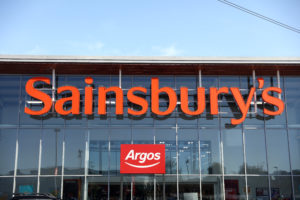Businesses throughout the UK, and the wider world, are all facing supply chain issues. Some supply chains have more inventory than they expected to have at this stage of the Spring, some are scratching around the world to keep on top of demand. Some businesses have lower, or non-existent levels of demand, some have hit peaks not seen for years.
With the length of lockdown in the UK somewhat, shall we say, uncertain at this point in time… planning is virtually impossible. It would take a brave organisation to tell me what retail sales look like in Q3 this year for example, because there is no-knowing what businesses will and will not be allowed to open by then, let alone how Covid-19 will change the usual patterns of behavioural economics that used to drive business.
 In recent weeks it has been heartening to see some businesses set aside funds for suppliers in their chains. Unilever promised access to a €500 million fund, while Primark has reassured its suppliers it will stick to £370 million of orders over and above the current £1.5 billion of stock floating around its stores, warehouses and in containers on boats around the world. Others, like Marks & Spencer, are planning for a prolonged downturn by reducing supply chain pipelines – which is a euphemism for not ordering some £100 million worth of goods in the case of M&S.
In recent weeks it has been heartening to see some businesses set aside funds for suppliers in their chains. Unilever promised access to a €500 million fund, while Primark has reassured its suppliers it will stick to £370 million of orders over and above the current £1.5 billion of stock floating around its stores, warehouses and in containers on boats around the world. Others, like Marks & Spencer, are planning for a prolonged downturn by reducing supply chain pipelines – which is a euphemism for not ordering some £100 million worth of goods in the case of M&S.
So, which is the more prudent plan?
The funding model creates enormous goodwill between procurement teams and suppliers, extending relationships that in some cases will have lasted decades. It will ensure long-term supply as it ensures a safety net, creating long-term supply chain resilience. While some company pockets might be deep, they are not limitless.
Not ordering saves on transport costs, warehousing, storage and labour – reducing overheads at a time when revenue is seriously challenged. It ensures that a major release value for goods can survive in the future, even if the short-to-mid-term forecast is dismal – but it puts the business at a competitive disadvantage.
 Recessions also mean that some businesses cease capital investment projects – such as Xpediator this week – while others see it as a time to invest, plan ahead and future-proof a business, like Sainsbury’s has by investing heavily in artificial intelligence in its supply chain or BooHoo has with its investments in automation.
Recessions also mean that some businesses cease capital investment projects – such as Xpediator this week – while others see it as a time to invest, plan ahead and future-proof a business, like Sainsbury’s has by investing heavily in artificial intelligence in its supply chain or BooHoo has with its investments in automation.
While these factors all depend on the intricacies of cash reserves, access to funding and the current state of individual business balance sheets – it is curious to note analogies with the current government approach.
At the beginning of the pandemic the government was celebrated for furlough funding – essentially paying people 80% of their current wages to do nothing and sit tight for a short period while the pandemic passed.
Now the message from the daily briefings is less encouraging. There is little in the way of a lockdown exit strategy, let alone a light on the horizon for when ‘normal’ economic activity can return.
The Treasury has indebted the country to relieve short-term pain, hoping for the best and preparing for the best. But recessions are rarely short. It took years to climb out of 2008/09 – and we even saw a short recession again in 2012. It was painful and scaring on the way that businesses behave and invest.
Supply chain resilience and sales and operational planning in 2020 should not assume a return-to-normal scenario. At this point of the pandemic there can be no way of knowing what the new normal will look like, but if you come out of a recession in the same way you went into it, you won’t be ready to take advantage of the growth that will come.
Christopher Walton, Editor, Logistics Manager







